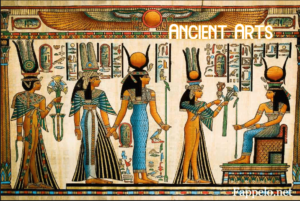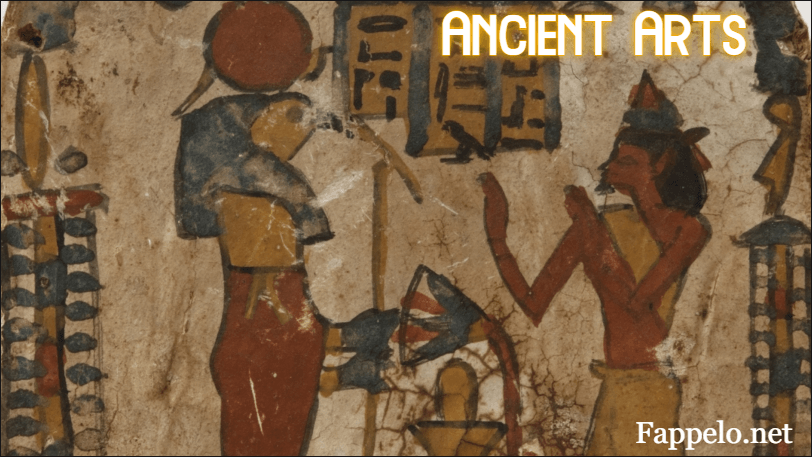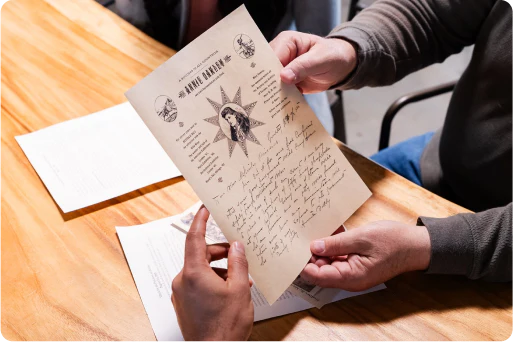Introduction
Imagine walking through an ancient temple adorned with intricate carvings and brightly colored frescoes. Art like this tells stories of civilizations long gone, embedded with their beliefs, values, and aspirations. This post takes you on a journey into the realm of ancient arts, uncovering their beauty and importance in shaping our world today.
The Language of Art Through Time

Art is much more than just colors on a canvas or shapes in stone. It is a powerful means of communication. Through various forms, art tells stories that words sometimes cannot express. Have you ever looked at a painting and felt a rush of emotion? That’s art speaking directly to you.
Art as a Means of Communication
From ancient times to the present, art has served as a universal language. It connects people across cultures and generations. Think about it: when you see a beautiful sculpture or a striking mural, you might not know the artist’s background, but you can feel the message. Art communicates feelings, ideas, and beliefs without needing translation.
Symbolism in Ancient Artworks
Ancient artworks often employed symbolism to convey complex ideas. For instance, Egyptian art is rich with iconography. Each symbol had a specific meaning. The ankh, for example, represents life. Similarly, the lotus flower symbolizes rebirth. These images told stories about the culture’s beliefs and values.
- Example: The use of colors in ancient pottery often had symbolic meanings. Red could signify life and vitality, while black might represent death.
- Example: In many cultures, animals depicted in art were not just representations but were believed to hold spiritual significance.
Cultural Stories Through Artistic Expression
Art reflects the culture it comes from. Each piece tells a story about the people who created it. For instance, Native American pottery often features designs that tell stories of their heritage. The patterns and shapes are not random; they represent their connection to the land, their ancestors, and their beliefs.
When you look at art, you’re often peering into a different world. It’s like opening a window to the past. Have you ever wondered what stories the artists were trying to tell? Each brushstroke or carving holds a piece of history.
Transcending Language Barriers with Art
One of the most remarkable aspects of art is its ability to transcend language barriers. You don’t need to speak the same language to appreciate a beautiful painting or a moving sculpture. Art speaks to the heart and soul. It can evoke emotions that words sometimes fail to capture.
Consider this: a piece of music can make you feel joy, sadness, or nostalgia, even if you don’t understand the lyrics. Similarly, visual art can stir deep emotions in anyone, regardless of their background. This is the magic of art.
Examples of Art Forms: Hieroglyphics and Pottery Designs
Art comes in many forms. Hieroglyphics are one of the earliest forms of written communication. They are not just letters; they are symbols that convey meaning. Each symbol tells a story about the ancient Egyptians’ lives, beliefs, and practices.
On the other hand, pottery designs serve as another fascinating example. Different cultures have unique styles that reflect their values and aesthetics. For instance, the intricate designs on ancient Greek pottery often depicted myths and heroic tales.
The Role of Art in Social and Political Contexts
Art has always played a significant role in social and political contexts. It can be a form of protest, a way to challenge the status quo. Think of the powerful murals in cities that speak out against injustice. These artworks not only beautify spaces but also spark conversations and inspire change.
In history, many artists have used their work to comment on political issues. For example, Picasso’s “Guernica” is a striking response to the horrors of war. It captures the anguish and chaos that conflict brings. Art can be a voice for the voiceless, a powerful tool in the fight for justice.
“Art is not what you see, but what you make others see.” – Edgar Degas
Ultimately, art provides a glimpse into the values and beliefs of ancient societies. It tells us who they were, what they valued, and how they expressed their thoughts and feelings. So, the next time you encounter a piece of art, take a moment to reflect on the story it tells. What emotions does it evoke in you? What message do you think the artist intended to convey?
Preserving the Legacy of Ancient Art
Preserving ancient art is no small feat. It involves a multitude of challenges that require expertise, patience, and innovation. Have you ever wondered what it takes to keep these masterpieces alive for future generations? Let’s explore the various aspects of art conservation and how they shape our understanding of history.
Challenges in Conserving Ancient Artworks
One major challenge is the natural degradation of materials. Ancient artworks are often made from fragile substances like wood, paper, and natural pigments. Over time, exposure to light, humidity, and temperature changes can lead to deterioration. Think about it: a painting that once dazzled with vibrant colors may fade into obscurity if not properly cared for.
Another issue is the environmental impact. Pollutants in the air can damage artworks, and climate change poses a new threat. For example, rising temperatures can accelerate the decay of certain materials. This raises the question: how can we protect these treasures in an era of rapid change?
Technological Innovation in Restoration
Fortunately, technology is stepping in to help. Modern techniques, such as digital scanning, allow conservators to document artworks before they degrade. This not only aids in restoration but also helps in research and education. Imagine having a detailed digital record of a mural that is centuries old. It can be invaluable for future studies.
Moreover, advanced materials are being developed for restoration. For instance, conservators now use special adhesives that are reversible, meaning they can be removed without damaging the original artwork. This innovation sparks hope for the future of art preservation.
International Efforts in Preservation
Preserving ancient art is not just a local endeavor; it’s a global mission. Various international organizations, like UNESCO, work tirelessly to protect cultural heritage. They provide guidelines and support for countries facing challenges in conservation. Have you ever thought about how interconnected our world is when it comes to preserving history?
Through collaborative efforts, countries share resources and knowledge. This unity is crucial, especially in areas where war or natural disasters threaten cultural sites. It’s a testament to the idea that art transcends borders.
The Role of Museums in Protecting Art
Museums play a pivotal role in the preservation of ancient art. They not only house these treasures but also educate the public about their significance. By showcasing restoration efforts, museums invite visitors to appreciate the delicate balance between preservation and presentation.
- Exhibitions: Many museums hold exhibitions that highlight restoration projects, providing insights into the challenges faced by conservators.
- Workshops: Some museums offer workshops where the public can learn about conservation techniques, fostering a deeper appreciation for art.
In this way, museums are not just custodians of art; they are educators and advocates for cultural preservation.
Community Involvement in Heritage Preservation
Community involvement is essential in heritage preservation. Local groups often mobilize to protect historical sites and artworks. They raise awareness about the importance of conservation and can even participate in restoration projects.
Have you ever seen a community come together to save a local landmark? It’s a powerful sight. When people feel connected to their heritage, they are more likely to advocate for its preservation.
Notable Restoration Projects
There are numerous notable restoration projects that showcase the dedication of conservators. One example is the restoration of the Sistine Chapel’s ceiling. This monumental task took years and involved meticulous cleaning and careful repairs. The result was a breathtaking revival of Michelangelo’s masterpiece.
Another impressive project is the restoration of the ancient city of Pompeii. Ongoing efforts aim to protect the ruins from further decay while making them accessible to visitors. It’s a delicate balance between preservation and public engagement.
“The greatest art is to sit and wait without doing anything.” – Charles R. N. Frick
The Impact of Ancient Art on Modern Creativity
Art has always reflected the times. Yet, when you look closely, you’ll see that much of modern creativity draws from ancient sources. Ancient art is not just a relic of the past; it’s a living influence that shapes contemporary artists every day. So, how does ancient art inspire today’s creators? Let’s explore this fascinating connection.
1. How Ancient Art Influences Contemporary Artists
Many artists today find inspiration in the works of their ancestors. Ancient art offers a wealth of ideas, themes, and techniques. For instance, the vibrant colors and patterns of ancient pottery can be seen in modern ceramics. Artists like Ai Weiwei often draw from traditional techniques while infusing contemporary themes. This blend creates a unique dialogue between the past and present.
2. Revival of Ancient Techniques in Modern Art
Have you ever noticed how some artists revive ancient techniques? Think about the way frescoes are painted or how sculptures are carved. These methods are not just for history books; they are alive in modern studios. Artists experiment with these old techniques, breathing new life into them. The simplicity of some ancient art forms can inspire modern minimalism. It’s a beautiful contrast, isn’t it?
3. Cultural Fusion Seen in Today’s Artworks
Today’s artworks often reflect a mix of cultures. Artists blend elements from various traditions, creating something entirely new. This cultural fusion is a hallmark of modern creativity. When you look at a piece of art, consider the many influences that might be at play. It could be a nod to African textiles or a reference to ancient Greek sculptures. The possibilities are endless!
4. The Role of Art History in Educational Curricula
Art history plays a crucial role in education. Students learn about ancient art to understand its impact on modern works. By studying the past, they gain insights into techniques and themes that resonate today. This knowledge helps foster creativity. It encourages students to think critically about their own work. Why reinvent the wheel when you can build on a strong foundation?
5. Case Studies of Modern Artists Inspired by Ancient Art
Let’s take a closer look at some artists who draw from ancient art. For example, the work of Kehinde Wiley often features themes from classical portraiture. He reimagines these ideas through a modern lens, showcasing contemporary subjects in poses reminiscent of historical figures. This approach not only honors the past but also challenges viewers to reconsider their perceptions of identity and representation.
Another artist, El Anatsui, uses discarded materials to create stunning installations. His work echoes the textile traditions of Africa, merging ancient craft with modern environmental concerns. These case studies remind us that ancient art isn’t just history; it’s a vibrant source of inspiration.
6. Public Art Exhibits Showcasing Ancient Influences
Have you visited a public art exhibit lately? Many exhibitions highlight the influence of ancient art. These displays often feature modern works alongside their ancient counterparts. This juxtaposition allows viewers to see the connections. It highlights how ancient techniques and themes continue to resonate. Such exhibits create a dialogue across centuries, bridging the gap between past and present.
“Creativity takes courage.” – Henri Matisse
Modern Art: A Nod to Historical Predecessors
In conclusion, modern art often nods to its historical predecessors. It creates a dialogue across centuries. The influence of ancient art is undeniable. It shapes contemporary artists, inspires new techniques, and fosters cultural fusion.
As you explore the world of art, consider how the past informs the present. You might find that the ancient influences are more relevant than ever. So, the next time you encounter a piece of modern art, ask yourself: what ancient stories are woven into its creation?
The Cultural Significance of Ancient Arts
Art isn’t just pretty pictures or sculptures. It’s a fundamental part of who we are. Ancient arts tell us stories about cultures, beliefs, and identities. They provide a glimpse into the past, allowing us to connect with those who lived long ago. Let’s explore the cultural significance of ancient arts and what they reveal about human experience.
1. Understanding Cultural Identity Through Art
Art is a powerful tool for expressing cultural identity. It reflects the values, beliefs, and traditions of a community. Think about it—what does art say about a culture? It can show pride, struggles, and aspirations. For many ancient societies, art was a way to communicate their identity to the world.
- Art creates a sense of belonging.
- It helps preserve traditions.
- It can challenge stereotypes.
When you look at ancient art, you’re not just seeing colors and shapes. You’re witnessing a narrative that has shaped a people’s identity.
2. Art as a Reflection of Historical Events
Art has always been intertwined with history. Ancient artworks often depict significant events, from battles to religious ceremonies. These pieces serve as visual records of what happened, capturing the essence of a moment in time.
Consider the famous murals of ancient civilizations. They often tell stories of triumph and tragedy. They remind us that art is not just about aesthetics; it’s about documenting human experience.
3. Symbolic Meanings of Various Art Forms
Every piece of art carries meaning. In ancient cultures, symbols were crucial. They conveyed messages that words sometimes could not. For example, a specific color or shape might represent a deity or a natural element.
- Colors can symbolize emotions.
- Shapes can represent ideas or beliefs.
- Materials used can indicate social status.
When you understand these symbols, you unlock a deeper appreciation for the art. It becomes more than just an object; it transforms into a story waiting to be told.
4. Involving Local Communities in Art Preservation
Preserving ancient art is a community effort. Local communities often play a vital role in protecting their cultural heritage. They understand the significance of their art and work to keep it alive.
Engaging communities ensures that traditions are passed down through generations. It fosters a sense of ownership and pride. After all, who knows the stories behind the art better than those who created it?
5. Cross-Cultural Influences in Art History
Art doesn’t exist in a vacuum. It’s influenced by other cultures. Ancient artists often borrowed techniques and styles from neighboring civilizations. This exchange enriched their own art forms.
Think about the impact of trade routes. They allowed ideas to flow freely. Art from one culture could inspire another, creating a blend of styles that reflects a shared history.
6. Importance of Storytelling in Arts
Storytelling is at the heart of ancient arts. Every sculpture, painting, or artifact has a story to tell. These stories connect us to our past and to each other. They remind us of our shared humanity.
“Every artist dips his brush in his own soul.” – Henry Ward Beecher
This quote captures the essence of storytelling in art. Each piece is a reflection of the artist’s experiences, emotions, and beliefs. It’s a way for them to share their soul with the world.
In ancient cultures, art was often used to convey moral lessons or cultural myths. These narratives were essential in shaping societal values and norms.
Exploring Various Ancient Art Forms
Ancient art is a vast and fascinating subject. It encompasses a variety of forms, each telling a story about the people and cultures that created them. Let’s take a closer look at some distinct examples of ancient art and what they reveal about our history.
Distinct Examples of Ancient Art
When we think about ancient art, several forms come to mind:
- Pottery: This is one of the oldest art forms. Pottery was not just functional; it was also decorative. Different cultures had unique styles that reflected their beliefs and environments.
- Sculpture: From the grand statues of ancient Greece to the intricate carvings of ancient Egypt, sculpture has always played a vital role in artistic expression. These pieces often depicted gods, leaders, or everyday life.
- Frescoes: These wall paintings were commonly found in ancient homes and public buildings. They often illustrated stories, myths, or important events, providing a glimpse into the daily lives of people from that era.
Regional Variations in Artistic Expression
Art is a reflection of culture. Different regions produced unique artistic expressions. For instance:
- The vibrant colors of Mesoamerican pottery contrasted sharply with the earthy tones of ancient Chinese ceramics.
- In Africa, masks and sculptures were often used in rituals, showcasing the spiritual beliefs of various tribes.
- European frescoes often depicted religious themes, while Asian art frequently focused on nature and harmony.
These variations highlight how geography and culture shape artistic expression. Have you ever noticed how a piece of art can transport you to a different time and place?
The Role of Craftsmanship in Ancient Societies
Craftsmanship was crucial in ancient societies. It wasn’t just about making art; it was about skill and innovation. For example:
- Potters mastered techniques to create durable and beautiful pieces, often using local clay.
- Sculptors developed methods to carve stone or cast metal, showcasing their technical prowess.
Every piece of art was a testament to the artist’s skill and the technological advances of their time. It’s fascinating to think about how these skills were passed down through generations.
Artistic Materials and Their Historical Context
The materials used in ancient art tell us much about the societies that created them. Some materials had both aesthetic and practical implications:
- Clay was readily available and easy to shape, making it a popular choice for pottery.
- Marble and bronze were used for sculptures, symbolizing wealth and power.
- Natural pigments found in minerals were used for frescoes, connecting art to the environment.
Understanding these materials helps us appreciate the challenges and innovations of ancient artists.
Documentation of Ancient Artists and Their Legacies
Many ancient artists remain nameless, but some are well-documented. Their legacies endure through their works. For instance:
- Phidias, a Greek sculptor, is known for his statues of gods.
- Raphael, although from a later period, was influenced by ancient art and helped revive some of its techniques.
These artists shaped the art world. As Eric Gill said,
“The artist is not a different kind of person, but every person is a different kind of artist.”
This quote reminds us that creativity is part of being human.
Exhibits Showcasing Ancient Art Styles
Visiting exhibits is a great way to experience ancient art. Museums around the world showcase various styles, allowing you to see the diversity in artistic practices. Some notable exhibits include:
- The British Museum, which houses artifacts from ancient Egypt and Mesopotamia.
- The Louvre, featuring a vast collection of Greek and Roman sculptures.
- The National Gallery, showcasing Renaissance frescoes and paintings.
These exhibits not only display art but also tell stories about the cultures that created them. They remind us of the unique identities of different civilizations.
Studying Ancient Art: A Window to Histories
When you think about ancient art, what comes to mind? Is it the stunning beauty of a Greek vase or the intricate carvings of an Egyptian tomb? Ancient art is more than just pretty pictures. It’s a vital part of our history. Studying it can open a window to the past, allowing us to understand cultures, beliefs, and events that shaped our world.
1. Education Through Ancient Art Studies
Educational institutions play a crucial role in studying ancient art. They offer programs that blend history with art critique. This interdisciplinary approach helps students grasp the significance of ancient works. But why is this important? It fosters a deeper appreciation for the artistry and context behind these pieces.
Students learn to analyze not just the aesthetics but also the cultural narratives embedded in the art. This can lead to a more holistic understanding of how art reflects societal values, religious beliefs, and historical events. It’s like piecing together a puzzle where each artwork is a vital piece of the larger story.
2. Importance of Archaeological Sites
Archaeological sites are treasure troves of ancient art. They provide context to the pieces we study. Imagine standing in a Roman amphitheater or walking through the ruins of a Mayan city. These places are not just remnants; they are living history. They tell us how people lived, worshipped, and created.
- They help us understand the environment in which the art was created.
- They provide insights into the daily lives of ancient people.
- They reveal the techniques and materials used by artists.
Without these sites, our understanding of ancient art would be severely limited. They are the backdrop against which art was made, and they enrich our appreciation of the works we study.
3. Modern Technologies Aiding in Ancient Art Study
Technology is transforming how we study ancient art. From digital imaging to 3D modeling, modern tools allow us to explore artworks in ways we never thought possible. For instance, scientists can use non-invasive techniques to analyze the materials used in ancient pieces.
Imagine being able to see beneath the surface of a painting without harming it. This not only preserves the artwork but also reveals hidden layers and techniques. It’s like discovering a new dimension of the artist’s intention.
4. Issues Related to Provenance of Ancient Artworks
Understanding the provenance, or the history of ownership, of ancient artworks is crucial. Why? Because it brings clarity and respect to collections. Knowing where an artwork came from helps prevent illegal trafficking and ensures that artifacts are preserved ethically.
It’s also essential for museums and collectors. They must be transparent about the origins of their pieces. This is not just a legal obligation; it’s a moral one. As Wang Yangming said,
“To know and not to act is not to know.”
If we know the importance of provenance, we must act to protect it.
5. Art in Historical Narratives and Interpretations
Art is often a reflection of historical narratives. Each piece tells a story. It can depict triumphs, tragedies, or everyday life. When studying ancient art, you can see how artists interpreted their world. This can lead to various interpretations based on cultural contexts.
For instance, a sculpture from ancient Greece might be seen as a celebration of beauty and strength. However, in a different context, it could be interpreted as a political statement. This fluidity of meaning makes art a powerful tool for understanding history.
6. Collaborative Projects Across Institutions
Collaboration is key in the study of ancient art. Institutions around the world are joining forces to share knowledge and resources. This teamwork enhances research and provides a broader perspective on ancient artworks.
- Joint exhibitions allow for a richer display of artifacts.
- Shared research initiatives foster innovation in study methods.
- Collaborative efforts can lead to more comprehensive conservation projects.
When institutions work together, they create a larger tapestry of knowledge. This collective effort not only benefits researchers but also enriches the public’s understanding of ancient art.
In studying ancient art, you embark on a journey through time. Each piece is a window to the past, revealing stories that shaped civilizations. The blend of education, technology, and collaboration ensures that these stories continue to be told and appreciated for generations to come.
FAQ’s
What Defines Ancient Art?
Ancient art refers to the artistic creations produced in ancient civilizations. This includes sculptures, paintings, pottery, and architecture. What sets it apart? It’s not just the age; it’s the cultural significance and the stories behind each piece. Think of it as a window into the past. Each artwork tells a story about the people, their beliefs, and their daily lives.
How Have Ancient Art Forms Influenced Modern Creativity?
Many modern artists draw inspiration from ancient art. For instance, you might notice the use of motifs or techniques from ancient cultures in contemporary works. This influence is evident in various forms, such as:
- Color Schemes: Bright, bold colors often used in ancient murals.
- Symbolism: Many symbols from ancient art still resonate today.
- Techniques: Methods of sculpture and painting have evolved but often reflect ancient practices.
When you look at modern art, think about the ancient roots that may be hidden within. Isn’t it fascinating how the past shapes the present?
What Challenges Face the Preservation of Ancient Artworks?
Preserving ancient art is no small feat. Many artworks are vulnerable to environmental factors, human intervention, and even neglect. Some of the major challenges include:
- Environmental Damage: Weather conditions can erode materials.
- Pollution: Urban areas can contribute to the deterioration of artworks.
- Funding: Many preservation projects lack sufficient funding.
These challenges highlight the need for awareness and action. What can we do to help protect these invaluable pieces of our heritage?
How Can One Get Involved in Art Preservation?
Getting involved in art preservation can be incredibly rewarding. Here are some ways you can contribute:
- Volunteer: Many museums and cultural institutions welcome volunteers for preservation projects.
- Attend Workshops: Learn about preservation techniques and practices.
- Spread Awareness: Share information about the importance of preserving ancient art.
Community initiatives often provide opportunities for hands-on preservation experiences. You can be part of something significant!
Why Is Understanding Ancient Art Important for Cultural Identity?
Ancient art is a reflection of cultural identity. It connects people to their heritage and history. Understanding these artworks can foster a sense of belonging. It helps you appreciate the diversity of human expression across time and geography. Think of it as a bridge linking you to your ancestors. How can we truly know where we are going if we don’t understand where we came from?
Where Can I Find Exhibitions Focusing on Ancient Arts?
Exhibitions dedicated to ancient arts can be found in various places:
- Museums: Many museums have dedicated sections for ancient art.
- Cultural Festivals: Events often highlight traditional art forms.
- Online Platforms: Virtual exhibitions allow you to explore ancient art from home.
Keep an eye out for local exhibitions, too. They can provide a unique opportunity to engage with history.
Conclusion
Addressing these questions helps demystify ancient art. It opens up discussions across different age groups and backgrounds.
Knowledge of ancient art fosters an appreciation for the artistic expressions found in contemporary works.
By understanding the challenges of preservation and the importance of cultural identity, you can play a role in safeguarding this rich heritage.
Whether you choose to volunteer, attend exhibitions, or simply share what you’ve learned, your involvement can make a difference.
The world of ancient art is not just a thing of the past; it’s a living part of our cultural landscape that continues to inspire and engage us today.



